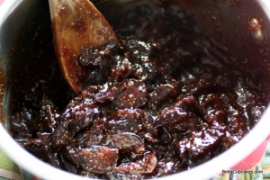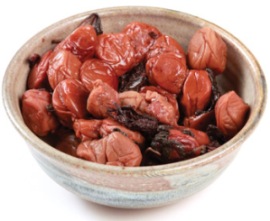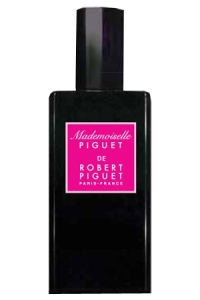Tom Ford does Serge Lutens. Or, to be more precise, Tom Ford tries desperately to be Serge Lutens, but falls flat on his face. That is my grumpy analysis of Plum Japonais, the latest Private Blend fragrance from Tom Ford. It is part of a brand-new collection of fragrances within his Private Blend line, and was just released in July 2013. The collection is called Atelier d’Orient, and consists of four perfumes: Shanghai Lily, Plum Japonais, Fleur de Chine, and Rive d’Ambre. Today is Plum Japonais‘ turn.
According to the Moodie Report, Tom Ford’s inspiration for Plum Japonais was the ume fruit:
Plum Japanais, as its name suggests, was inspired by the ume plum. ‘I have always been fascinated by unusual ingredients from exotic cultures,’ Ford revealed. ‘The ume plum…has great meaning in Oriental culture; in Japan and China, it is a sacred symbol of Spring. I wanted to craft a fragrance around the ume, because it has a texture and aroma that is so luscious.’
Now, I have searched and searched for some official word on who is the actual perfumer responsible for the Atelier d’Orient collection, or for Plum Japonais in specific. I can’t find it anywhere, which is slightly unusual these days when a perfumer’s name is frequently mentioned in press releases or in articles about a new fragrance.
Still, it wouldn’t be important or significant except for one thing: Plum Japonais is a total rip-off of Christopher Sheldrake‘s gorgeous, stunning Fille en Aiguilles for Serge Lutens. It is a fragrance that I love with a passion, and it may be my favorite Lutens that I’ve tried in recent memory. So, you can imagine my grumpiness and sour mood when I thought about how Tom Ford was so blatantly copying about 90% of the Lutens/Sheldrake masterpiece. Yes, there are differences, but they are so minor that I will stick with my numeric assessment that 90% of Plum Japonais is Fille en Aiguilles. It’s so close that much of the detailed break-down of Plum Japonais feels almost redundant (though I will do it shortly), but the main thing you should take away is this: Plum Japonais is Fille en Aiguilles done very, very badly.
Some perfumistas have compared Tom Ford’s style of perfumery to that of a frat boy with his fragrances’ over-the-top loudness and their hyper-sexualized marketing. I don’t always agree because I think Tom Ford is quite capable of producing more restrained, elegant pieces, though his marketing definitely verges on the bold and, sometimes, crass. But Plum Japonais definitely felt like a frat boy took a sledgehammer approach to Uncle Serge’s gorgeously refined, well-balanced, utterly beautiful masterpiece. Fille en Aiguilles may not rank among the best-known Lutens, but it is massively beloved amongst almost everyone who has tried it, some of whom rate it as their favorite Lutens perfume ever. And Plum Japonais simply cannot measure up. It’s as though One Direction attempted to cover John Lennon.
During my initial test of Plum Japonais, my irritation was becoming increasingly sharp and hostile, so I decided to make a more concerted effort to find out which perfumer was responsible for ripping off Christopher Sheldrake‘s creation for Uncle Serge. You cannot imagine my shock when I finally dug up the rumoured answer: Christopher Sheldrake himself! [Update: 8/4/13– see the note at the end of this review for the information that a different nose seems to be responsible for the creation of Plum Japonais.]
According to the blog, Best Things in Beauty, “[t]he fragrance has been unofficially attributed to perfumer Christopher Sheldrake.” I haven’t seen that attribution mentioned anywhere else, so I have no idea if it’s true or not. But it probably is, given the enormous similarity between the two fragrances — and that just irritates me for a whole new set of reasons. It’s not the fact that Christopher Sheldrake is cheating on Uncle Serge (perfumers are allowed, after all, to work freely where they want, and not just for one client). Rather, it’s the fact that he’s taken his Lutens creation, and so barely tweaked it for Tom Ford that it feels almost insulting to Fille en Aiguilles. It’s damn lazy. And, making matters even worse, the result is a nondescript, utterly imbalanced, very flat, badly done, uninteresting version of Fille en Aiguilles. If Fille en Aiguilles were a person, it should sue for defamation and copyright violation. So, let’s get to Sheldrake’s One Direction-like olfactory copy of the Fille en Aiguilles.
Fragrantica classifies Plum Japonais as “Floral Fruity,” and the notes, as compiled from both that site and Premiere Avenue, include:
Japanese ume plum, saffron, Cinnamon Bark Orpur, immortelle, plum blossom, camellia, agarwood (oud), amber, benzoin, fir and vanilla.
Plum Japonais opens on my skin with plum liqueur, plum molasses, brown sugar syrup, lots of ginger, strong frankincense smoke, and a subtle woodiness. It’s totally Fille en Aiguilles. Flittering around Plum Japonais’ edges are saffron, muted traces of fir resin, and candied immortelle. The latter shows off both its sides here: its herbal floral face, and its slightly maple syrup one. Once in a blue moon, the oud will pop up in the minutest trace, feeling as muted as the fir resin.
Within minutes, Plum Japonais’ syrupy plum sweetness turns darker and significantly woodier. There is almost a burnt undertone to the combination which probably stems from the cinnamon tree bark, which is a whole, different animal than mere cinnamon powder. Amusingly, it’s an ingredient that Sheldrake featured front and center in another Lutens’ creation, the woody cinnamon oriental, La Rousse. The bark has an aroma that is spiced, but more akin to very dry, somewhat bitter, acrid, smoky wood. I wasn’t crazy about its odd nuances in Rousse, and I’m not crazy about it here. Still, it’s very subtle at this point, adding just an indirect effect to the overall woodiness running like a vein through all of Plum Japonais’ sticky, fruity sweetness and smoke.
Ten minutes in, something else rises to the surface. An odd floral note that I assume is the camellia. It’s a very creamy, velvety, white, languid scent with a strange but subtle lemony undertone, and it feels quite out-of-place amidst the increasingly dry, smoky, woody bouquet. The spices feel more noticeable, too. The saffron adds a definite kick of fieriness to the fragrance, though the note is not very distinct in its own right. For a few minutes, it adds such a bite to to the fragrance that it almost seems as though a red-hot chili pepper were thrown into the mix, but that impression quickly fades. By the 15-minute mark, Plum Japonais actually feels a little off-kilter. The lemony, creamy floral camellia attempts to balance out the increasingly harsh smoky-woodiness set amidst all that plum molasses and liqueur, but it can’t pull it off. The note is too muted. And, I still think it feels totally out of place.

Fruit Jam. Source: Bettycupcakes.com (For recipe or website, click on photo. Link is imbedded within.)
Nonetheless, Plum Japonais is still almost entirely Fille en Aiguilles, only with minor differences. The very piney, evergreen forest hues of the Lutens beauty are practically non-existent in Plum Japonais, the inclusion of “fir” or “fir resin” in the notes notwithstanding. Sheldrake (if it is indeed he who is behind Plum Japonais) has substituted instead a different sort of woodiness to the scent. Yet, woody dryness is hardly the main, dispositive characteristic of Fille en Aiguilles. It’s the bloody spiced plum liqueur infused with frankincense smoke, that trademark Lutens’ signature of stewed fruit made more concentrated and plummy, with brown sugar sap, and heaping, walloping, hefty doses of sharp, black incense. And Plum Japonais has that in spades, from start to finish.
The problem is that Plum Japonais is like a knock-off of an expensive designer suit, only all the proportions are wrong. Lutens’ Fille en Aiguilles is stunningly balanced, whereas Plum Japonais is not. It feels significantly more acrid, more unbalanced in the sharpness of the smoke and the dryness of the woods. And nothing in the first two hours changes my impression, even though some of the other notes wax and wane in prominence. The immortelle occasionally rises to the surface, feeling like the herbal-floral version now, and not the maple syrup one, but it is muted and vague as a whole. The spices feel a little punchier than they did in the opening minutes, and I continue to think that there is ginger mixed in the blend. The camellia, in contrast, has now retreated to the background where it adds just a quiet, shy, creaminess and muted floral whisper to the overall bouquet.
The more interesting thing is the oud. It was just a whisper in the opening, hiding in the shadows behind all that plum liqueur. Now, however, the agarwood is more a wave that surges, ebbs, and then repeats the process. Sometimes, it feels muted, but it becomes increasingly significant at the start of the second hour, turning Plum Japonais into a fragrance where the dry woods almost compete with the incense-infused plum molasses. Unfortunately, I don’t particularly like these dry woods as compared to the richer, deeper, and significantly more interesting pine ones in Fille en Aiguilles.
As for the smoke, it varies as well. On certain parts of my arm, it feels quite bitter, pungent, and harsh, while, elsewhere, it’s more blended into the fruit. I think the cinnamon tree bark is behind some of the differences. Its smokiness in Serge Lutens’ Rousse felt quite acrid and bitter at times, and I think the note here has combined with the frankincense to create a combination that feels quite harsh at times. It’s never the smooth, almost sweetened incense that you’d expect, or, indeed, the gorgeous smoke in Fille en Aiguilles. This is much sharper and drier in nature, with a slightly bitter undertone.
It takes 50 minutes for Plum Japonais to soften and lose some of its harsh edges. The plum top notes start to feel flatter, while the smoky oud and the woods in the base seem smoother and less sharp. There is still a bitter, slightly burnt, pungent nuance to the woods, but the perfume as a whole feels a bit less askew and out of balance. Unfortunately, Plum Japonais also starts to feel a little murky and muddy at this time, both texturally and in terms of the distinctness of its notes. It’s starting to blur into a pretty smoky-woody-fruity fragrance just barely dominated by plum. By the end of the second hour, Plum Japonais is starting to fizzle out with notes that feel increasingly amorphous. The sillage has changed too, as the perfume just barely hovers an inch above the skin, if that. Plum Japonais is now just flat, stewed, sweet plummy jam with vague smoke and dry woody notes. In short, the Serge Lutens signature of dried, sweetened, dark fruits with oriental touches, but without the Lutens oomph and drama. At the 3.5 hour mark, Plum Japonais is a total skin scent, and has devolved to mere plummy sweetness barely flecked by some amorphous dryness and smoke. It remains that way until the very end, growing even more hazy, until its dying moments when it’s just vague sweetness.
All in all, Plum Japonais lasted a little over of 6.75 hours on my perfume-consuming skin, with incredibly restrained, soft sillage after the first hour. I applied quite a hefty portion too, as I had a very large sample from Neiman Marcus, so I basically wetted a long patch on my forearm with the equivalent of about 5 huge smears. If I’d applied my normal amount, I suspect the numbers would be significantly lower.
I have to admit, given the strength of Plum Japonais at first, and the power of Tom Ford’s Private Blends in general, I’m a little surprised at the shortness of time, as well as the restrained nature of the fragrance when taken as a whole. However, the fact that the perfume is ultimately quite subdued makes a lot more sense if you put it into context and in conjunction with the similar characteristics of Shanghai Lily. Both Atelier d’Orient fragrances seem intentionally designed to be more quiet, restrained takes on a spicy Oriental. I suspect that Tom Ford is aiming this collection at wealthy buyers in Asia, buyers who may not appreciate his usual, brash style, or a truly hardcore, intense Oriental in the style of something like Amouage. Plum Japonais is an attempt to give them a more subdued take on a masculine, woody, fruity oriental, with Shanghai Lily attempting to do the same for the more feminine, floral oriental version. That said, I want to emphasize that Plum Japonais is not a masculine scent at all. It’s wholly unisex for everyone except those whose perfume preferences lean towards the fragrances that are either fresh, clean, soapy, dainty, powdery, aldehydic, or some combination thereof.
Plum Japonais is too new for there to be many reviews available for comparison. My sense of how people generally see the Atelier collection as a whole is that they think it’s nondescript and uninteresting, with Plum Japonais being the best of the lot. That does not mean that they think it’s a great perfume, however. The Basenotes review section for the fragrance has only three reviews up at this time. One of them, “kende,” seemed to share my views about Plum Japonais’ development:
The problem is how short lived this wondrous moment is. Within 15 minutes the scent begins to feel more and more flat. The complexities start to vanish and what suddenly remains is a puny, underwhelming “perfumey” base that smells like a very commonplace generic perfume type of scent. This doesn’t take hours, mind you. It takes no greater the length of 45 minutes to unravel from that rich, opulent opening. […]
This perfume could’ve really been something special, that opening is something every perfumista should experience, but there is no backbone to hold Plum Japonais up over the hours. It goes on like a work of art and but feels more and more like a cheap photocopy as the minutes turn to hours. […]
The scent is 4 stars.
The longevity is embarrassing for a Tom Ford private blend. 0 stars.
Kende doesn’t know it, but Plum Japonais absolutely is a “cheap photocopy[,]” and he or she needs to go try Fille en Aiguilles. Over in a separate Basenotes board thread, the common consensus for Plum Japonais is, and I quote, “meh.” As one poster put it, “I’m honestly not impressed with any of the new Atelier scents. I guess this would be the stand out, but thats not saying much.”
No-one talks about Fille en Aiguilles because, as I noted up above, it’s not one of the better-known Lutens fragrances. But the perfume blows Plum Japonais out of the water! It is also significantly cheaper than Tom Ford’s ersatz, wanna-be copy which costs $210 for the smallest version. Fille en Aiguilles retails for $140, but can easily be found discounted at a number of online perfume retailers, with the lowest price I’ve seen being $80. (See the Lutens review for full retail links.) Honestly, writing out that price differential just offends me even more. Plum Japonais is such a total waste of money. It’s one thing to take a great perfume and use it as a source of inspiration for another; lots of perfumers create scents that have some overlap or a common signature. But Plum Japonais is such a completely out-of-whack, wholly unbalanced, fizzling, flat, totally lazy, “cheap photocopy” of such a supremely stunning, refined, mysteriously seductive, incredibly evocative, utterly mesmerizing scent that it’s positively insulting. The irrational side of me feels like shaking Christopher Sheldrake — who may be my favorite perfumer ever — and asking him, “Why? Why??!!”
In fact, I think I’m too irate to continue this review.
[UPDATE: 8/4/2013– According to one commentator to the blog, “Mike,” who left an answer below, Christopher Sheldrake did not mutilate his creation because Yann Vasnier of Givaudan is the actual nose behind Plum Japonais. Mike cites as sources two unnamed bloggers who contacted Tom Ford. He later directed me to a review at CaFleureBon which states that Yann Vasnier is the creator of Plum Japonais. That review was posted just yesterday, a few days after my own, so the information wasn’t available to me at the time, but I’m very grateful to Mike for telling me about it. I would like to extend to Christopher Sheldrake my heartiest apologies for thinking he had plagiarised himself with a bad copy, and for wanting to shake him like a rag doll.]








